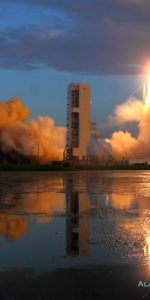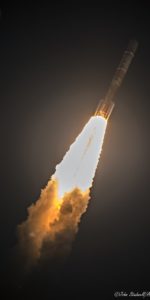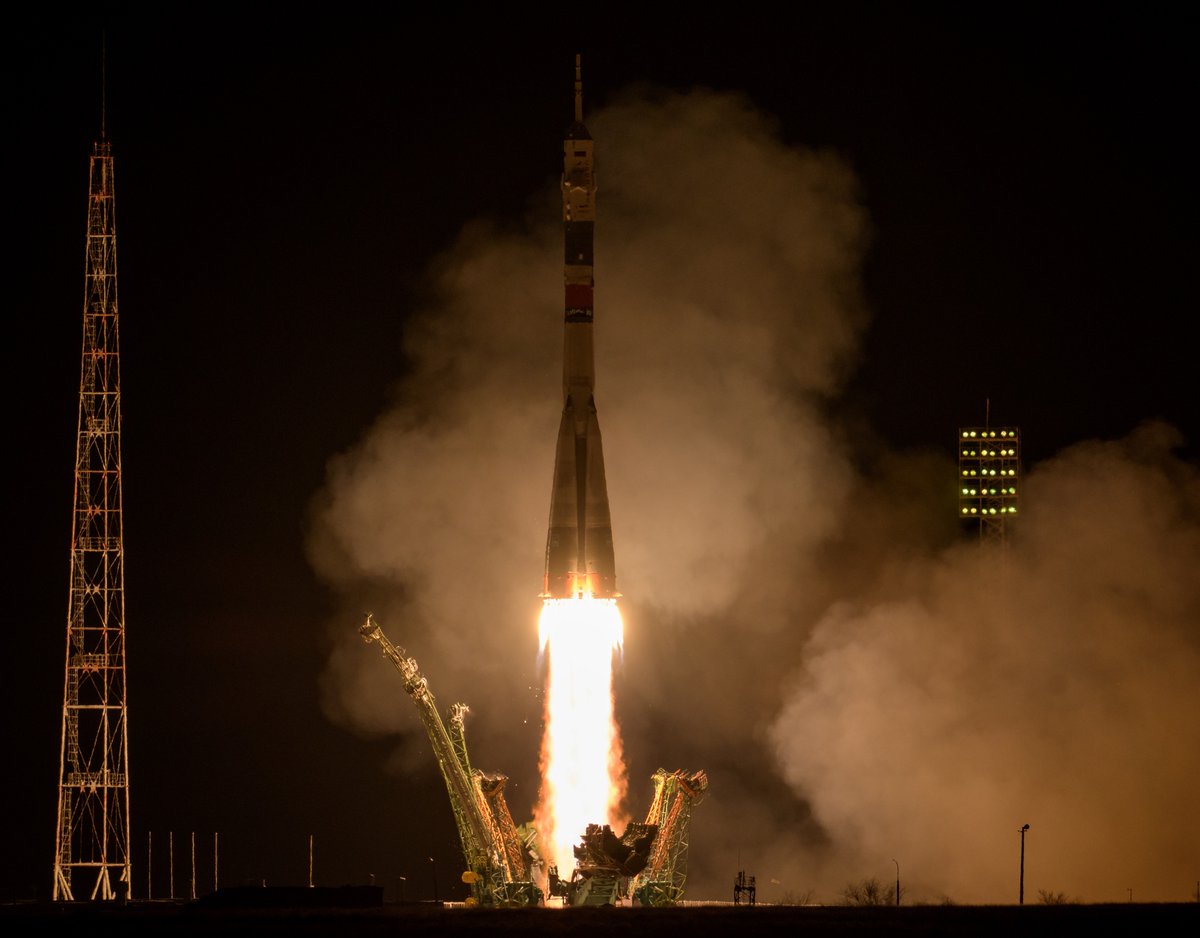
Two U.S. astronauts rode into orbit, shoulder-to-shoulder with a Russian commander earlier today, when Soyuz MS-12 speared smoothly aloft from Site 1/5—the historic “Gagarin’s Start”—at Baikonur Cosmodrome in Kazakhstan. NASA flyers Nick Hague and Christina Koch were joined by seasoned cosmonaut Alexei Ovchinin for the on-time liftoff and are now embarking on a six-hour and four-orbit “fast rendezvous” to reach the International Space Station (ISS).
By a strange quirk of coincidence, today (3/14) happens to be “Pi Day”, and the mission of Ovchinin, Hague and Koch set off at 3:14 p.m. EDT Thursday (12:14 a.m. local time Friday). “Liftoff on #PiDay,” tweeted Hague in the hours before launch. “An engineer’s dream come true. Next stop, @Space_Station.” The trio are targeted to dock at the station’s Earth-facing (or “nadir”) Rassvet module at 9:07 p.m. EDT.
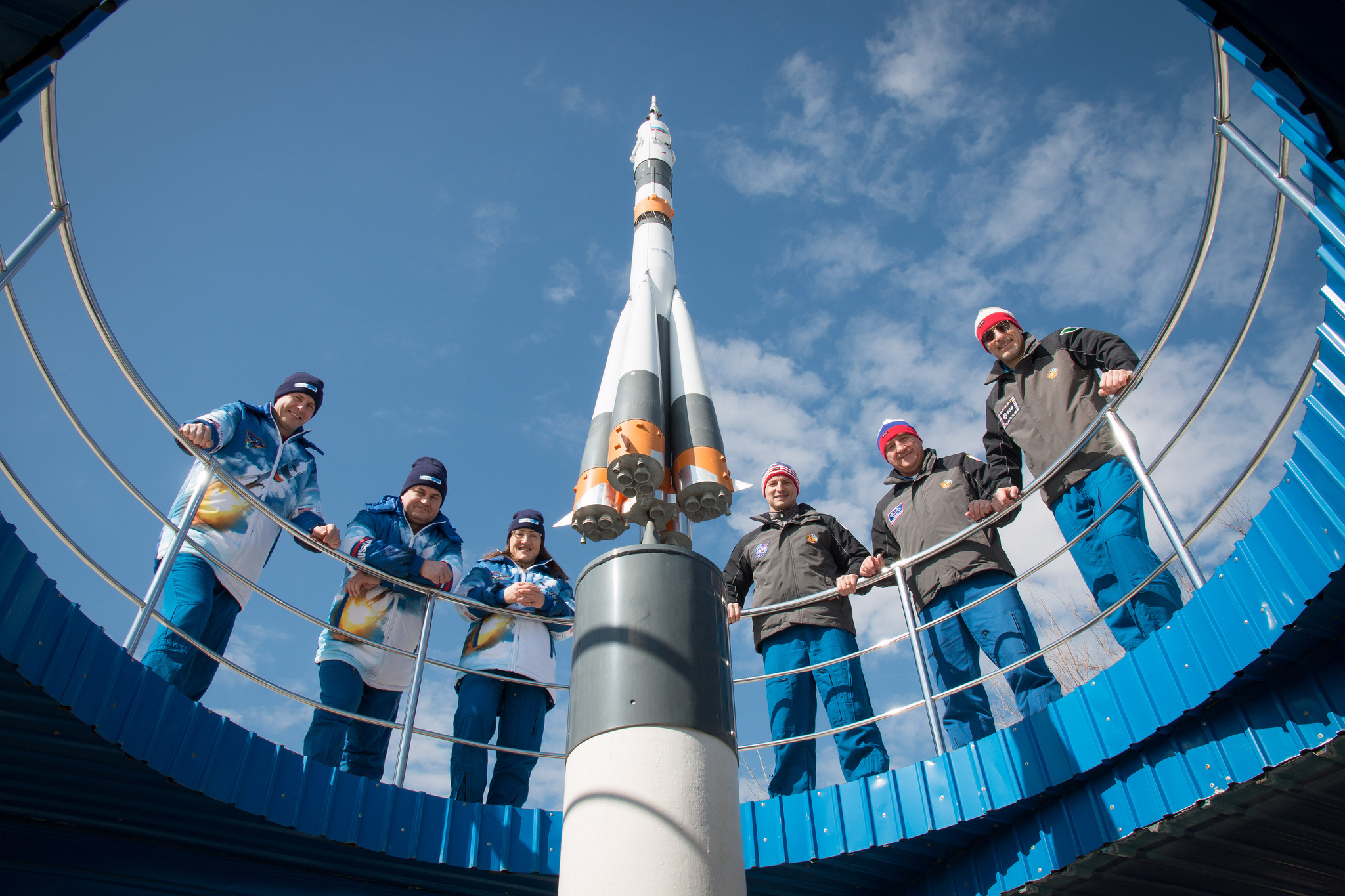
Although the exact plan for their increment remains to be determined, with NASA’s Rob Navias advising AmericaSpace that “Flight Program is under review”, it is expected that Ovchinin and Hague will return to Earth in early October, after about 200 days, but “we expect Koch to remain on-board ISS” for an extended stay.
As outlined in AmericaSpace’s preview article, the crew line-up for this mission has changed markedly in recent months, with only Koch originally assigned to Soyuz MS-12, back in May of last year. Her crewmates Ovchinin and Hague were launched last October aboard Soyuz MS-10, but they suffered a high-altitude abort and—thanks to the superb functionality of the launch escape system—their capsule was plucked away from the failing Soyuz-FG booster and parachuted to a smooth touchdown on the Kazakh steppe. Two months later, in early December, Ovchinin and Hague were assigned to join Koch on Soyuz MS-12. Meanwhile, Koch’s original crewmate, veteran cosmonaut Oleg Skripochka, was shunted to a downstream assignment and will now command Soyuz MS-15 in September 2019.
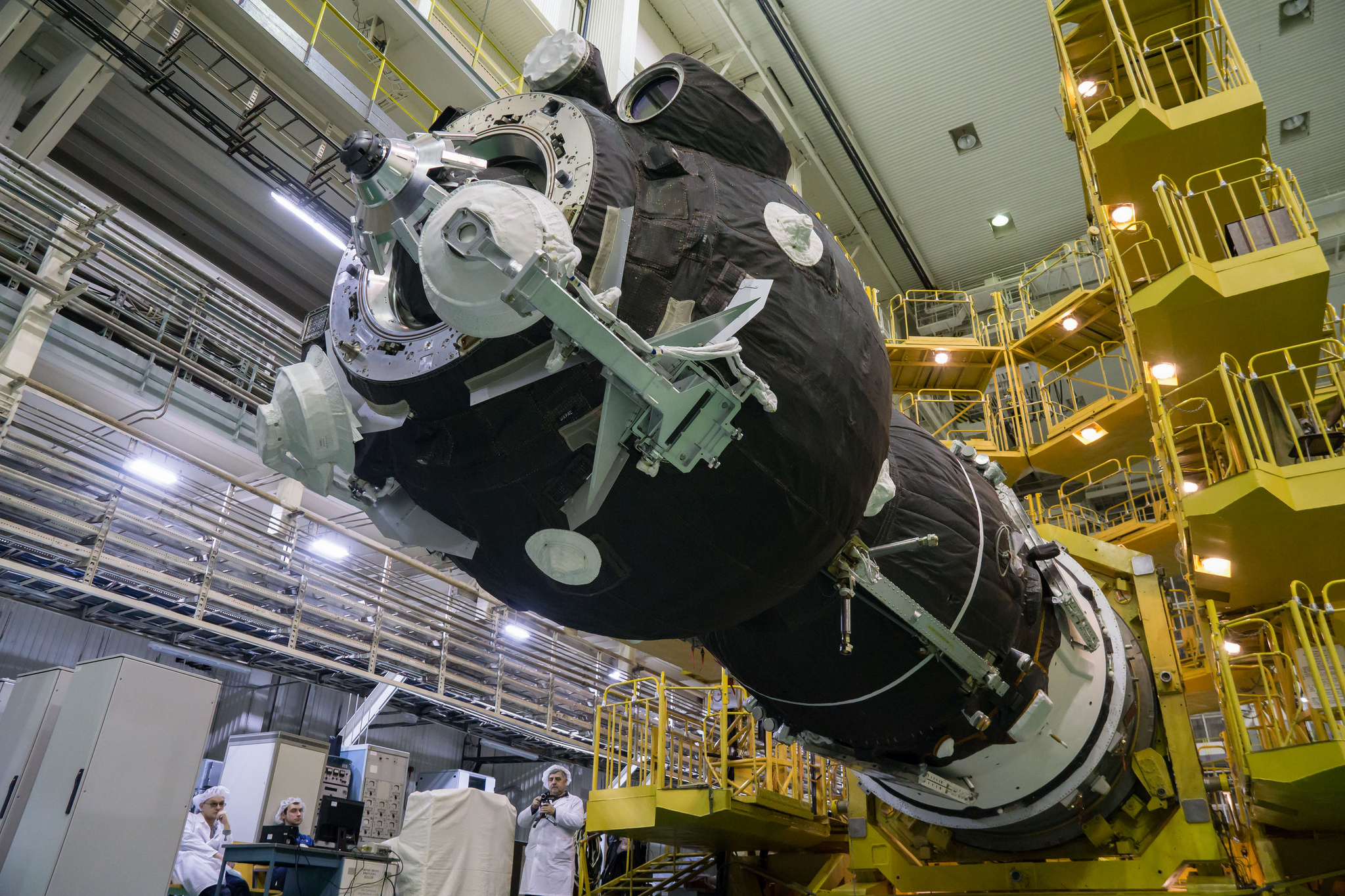
The prime crew and their backups—Russian cosmonaut Aleksandr Skvortsov, Italy’s Luca Parmitano and NASA astronaut Drew Morgan—completed their final exams last month and flew from the Star City training complex, on the forested outskirts of Moscow, to Baikonur, on 26 February. Over the next few days, they inspected Soyuz MS-12, checked out their Sokol (“Falcon”) launch and entry suits and completed final training, as well as immersing themselves in the traditional pre-flight rituals of raising national flags and planting trees in Baikonur’s long-established Avenue of Cosmonauts. On 2 March, the Soyuz spacecraft was filled with compressed gases and on the 4th it was mated to its transfer compartment, ahead of integration with the 162.4-foot-tall (49.5-meter) Soyuz-FG booster and rollout to the launch pad on Tuesday 12th.
Earlier today, both crews were awakened in Baikonur’s Cosmonaut Hotel, about 8.5 hours before launch, and proceeded via bus to Site 254 to don their space suits, whereupon they were taken out to the pad. Ovchinin was inserted into the center commander’s seat of the Soyuz MS-12 descent module, flanked by Hague in the left-side Flight Engineer-1 couch and Koch in the right-seat as Flight Engineer-2. Fifteen minutes before T-0, the Launch Abort System (LAS) was placed onto internal power and armed. At five minutes, Ovchinin’s controls were activated and internal avionics were spooled-up to monitor Soyuz-FG systems during the climb to orbit. From within the control bunker, the launch “key” was inserted to enable the rocket’s ordnance. At ten seconds, the turbopumps of the RD-108 core stage engine and the RD-107 engines of the four tapering boosters attained full speed and Soyuz MS-12 left Earth precisely on time at 3:14:08 p.m. EDT Thursday (12:14:08 a.m. local time Friday).
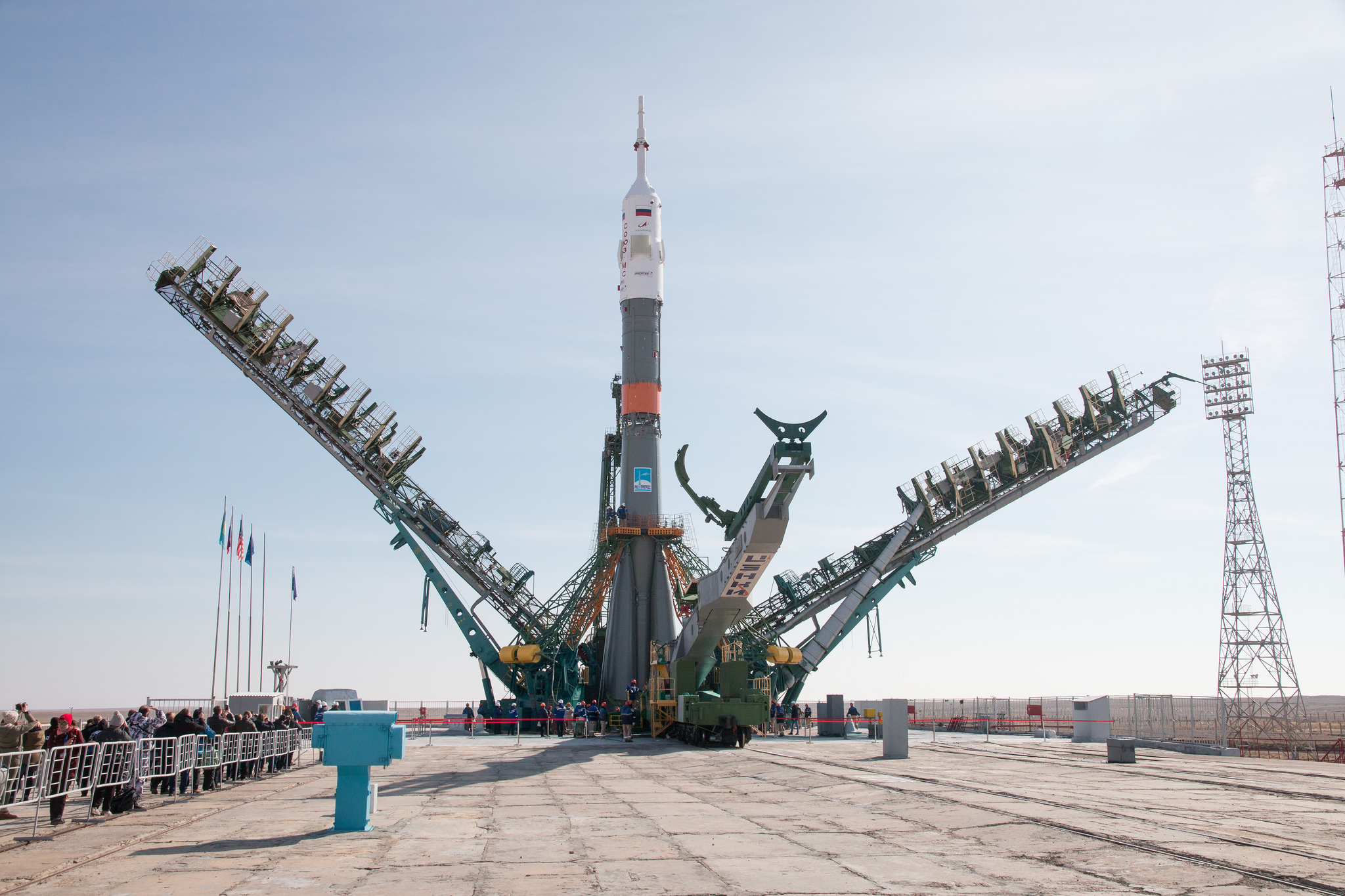
Roaring away from Site 1/5 under a combined thrust of 930,000 pounds (422,000 kg), the strap-on boosters were jettisoned at two minutes into the flight, by which time Ovchinin, Hague and Koch were already traveling in excess of 1,100 mph (1,770 km/h). With the boosters gone, the core stage continued to burn hot and hard, until its RD-108 shut down a little under five minutes after leaving Baikonur.
At the instant of shutdown, the crew had attained an altitude of 105.6 miles (170 km). The third stage then fired its RD-0110 engine, accelerating Soyuz MS-12 to a velocity in excess of 13,420 mph (21,600 km/h) and eventually shutting down at eight minutes and 46 seconds into flight. By the time the RD-0110 cut off and the 22-foot-long (6.7-meter) third stage separated, Soyuz MS-12 had attained a preliminary orbit with an apogee of about 143 miles (230 km) and a perigee of 118 miles (190 km), inclined 51.6 degrees to the equator.
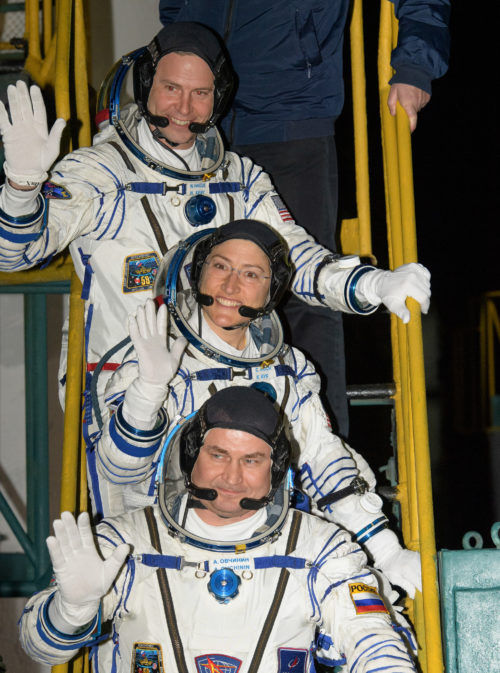
Docking is scheduled to occur at 9:07 p.m. EDT Thursday, slightly less than six hours after liftoff, and following pressurization and leak checks Ovchinin, Hague and Koch will be welcomed aboard the ISS by incumbent Commander Oleg Kononenko and his crewmates David Saint-Jacques and Anne McClain.
The coming weeks and months promise to be busy ones, with three sessions of U.S. Extravehicular Activity (EVA) planned, including the historic first-ever all-female spacewalk by McClain and Koch on 29 March. Two SpaceX Dragon cargo ships will arrive in April and July, a Northrop Grumman Corp. Cygnus will visit in April, two Russian Progress freighters are slated for April and July and a Japanese H-II Transfer Vehicle (HTV) in September.
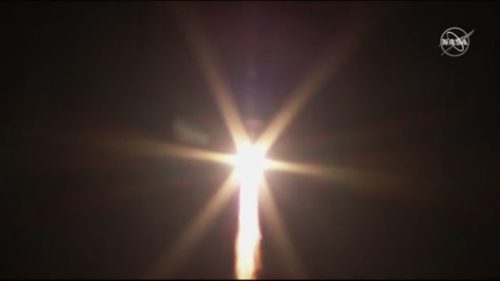
Dovetailed into this manifest are the unpiloted test-flight of Boeing’s CST-100 Starliner in the April-May timeframe, followed by crewed missions later this summer and fall. When Kononenko, Saint-Jacques and McClain return to Earth in late June, Ovchinin will take command of the space station, leading Expedition 60, and his crew will be increased to six-person strength in early July when Soyuz MS-13 and Skvortsov, Parmitano and Morgan arrive.
As detailed in our Soyuz MS-12 preview, the return schedule for Ovchinin, Hague and Koch remains in flux, with NASA’s Rob Navias advising AmericaSpace that “Flight Program is under review”. However, he did definitely advise us that “Hague returns to Earth in October” and that “we expect Koch to remain on-board ISS” for an extended period. This will open up a seat aboard Soyuz MS-12 to return the first United Arab Emirates (UAE) astronaut, who will launch aboard Soyuz MS-15 in late September on a short visiting mission. It remains to be seen if Koch will return to Earth on Soyuz MS-13 in December, with Drew Morgan relinquishing his seat for a similarly extended ISS stay.




